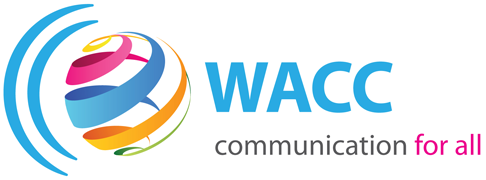
05 May 2025 World Press Freedom Day: A reminder to think local
When I started to think about World Press Freedom Day (3 May) this year, my mind – and fingers on the keyboard – went first to the existential crisis facing the traditional media industry, battered as it is from so many economic, political, technological, and cultural sides.
Then I stepped back. The mega problems are very apparent, and frankly, in so many online meetings trying to address the current challenges to our information ecosystem it’s easy to go into disaster mode.
We cannot ignore the immense problems we face to support independent, accurate, public interest journalism, and collective advocacy is essential. But maybe the first constructive action we need to take is to look locally.
In my semi-rural community in the UK, in addition to several regional print and digital news agencies (owned by much larger media conglomerates so take “regional” with a big grain of salt), we have a very local monthly bulletin. Actually, it’s usually an 80-page booklet full of essential information, from the calendar of local events and bus timetables to updates from our MP and parish council, as well as instructions for red squirrel habitats and contributions of local poetry.
Local volunteers put the bulletin together, and the whole community contributes. Judging from all the references made to it in other channels, as well as reports from those advertising events and services, it has to be one of the most thoroughly read information sources in my local area.
But it also faces the same pressures of media agencies large and small. Declining ad revenue and rising print costs mean its current form is unsustainable. The organizers’ attempts to access grants have so far been unsuccessful. They are trying to reduce costs and are contemplating raising the donation price but worry it will put people off. They plead for people’s ideas to help solve the problem.
In other communities around the world, we have trusted community radio, local networks, even WhatsApp groups that keep communities informed and connected. Yet these local sources are still a teacup in the midst of a global information storm and cannot replace the role of larger-scale public interest media.
With the rise of digital platforms, traditional media has suffered huge declines in ad revenue as the vast majority of non-China ad revenue goes to Google, Meta, and Facebook. These same digital platforms increase pressure on media agencies to deliver new information 24/7, compete with an information free-for-all, and combat misinformation and disinformation that is sometimes directed at the agencies themselves.
Massively compounding the media’s financial woes, the Trump administration’s cuts to foreign aid immediately impacted independent media in over 30 countries, most of which are in conflict-torn, impoverished contexts in which reliable, accurate journalism is literally a lifeline.
And in this already-dire funding landscape, major institutions like the Open Society Foundations have moved away from funding independent media, and usually supportive governments such as the UK, Norway, and Germany are having to consider shifting their funds to increase defence capabilities in the face of geopolitical challenges.
Journalists face increasing physical dangers that also impact the flow of information, particularly from conflict zones. The Committee to Protect Journalists reported that 2024 was the deadliest year for journalists since it began collecting data over three decades ago:
“The number of conflicts globally – whether political, criminal, or military in nature – has doubled in the past five years, and this is reflected in the high number of deaths of journalists in nations such as Sudan, Pakistan, and Myanmar. But the toll of conflict on the press is most glaring in the unprecedented number of journalists and media workers killed in the Israel-Gaza war, 85 in 2024, and 78 in 2023.”
As if these challenges weren’t enough, there is the impact of artificial intelligence on journalism – the focus of the UNESCO World Press Freedom Day signature event this year. The global commemoration is exploring if AI can deliver increased efficiency and innovation that balances out the dangers of deepfakes and biased content.
WACC works with its partners and global network to promote and protect press freedom – most significantly this year at the high-level World Summit on the Information Society in July in Geneva.
But we should never forget that protection and promotion of information as a public good starts locally, with strong community connections, mutual respect, and trusted sources.
World Press Freedom Day is an apt reminder to look locally and support community media. Thinking and acting locally is an essential step to a free and fair information landscape globally.
Photo: Andrea Berg/Shutterstock



Sorry, the comment form is closed at this time.